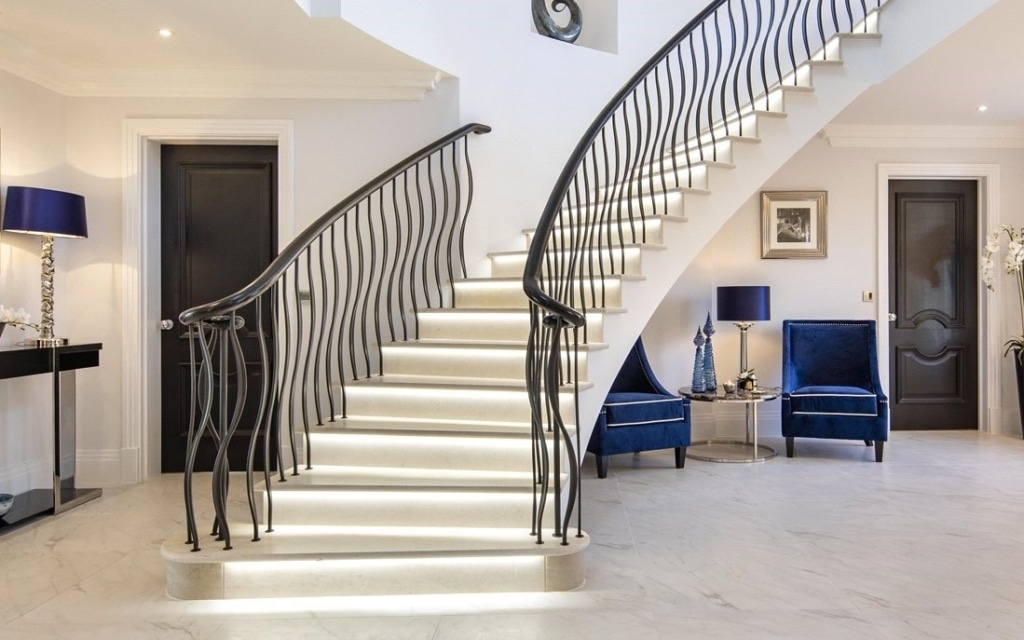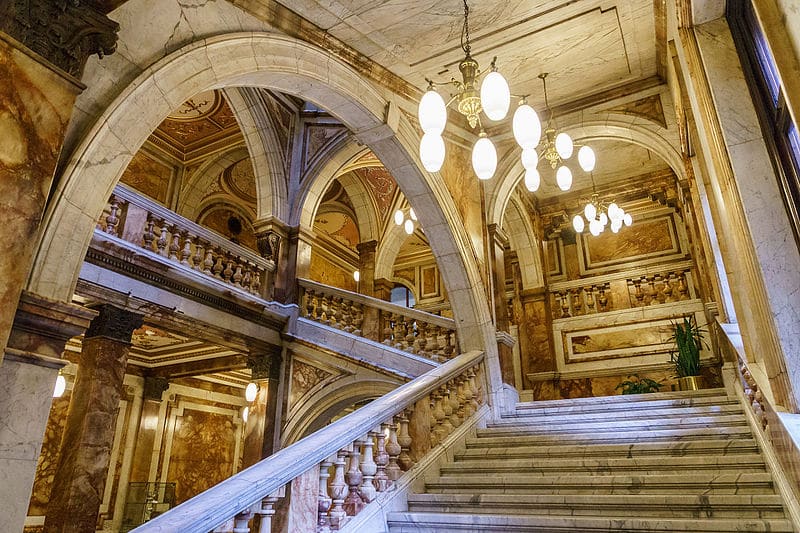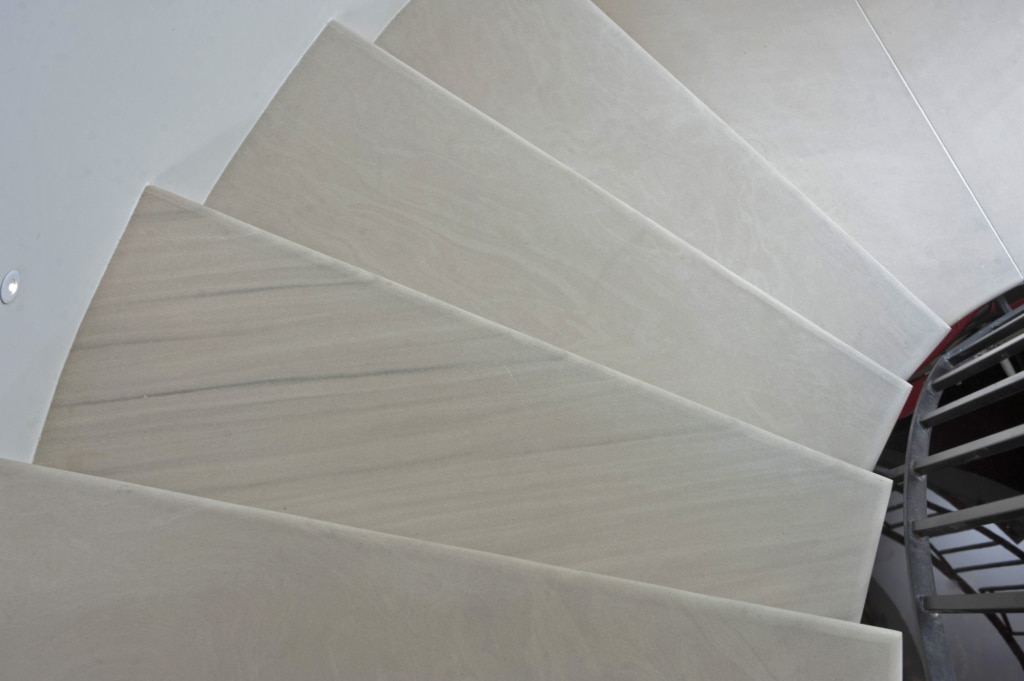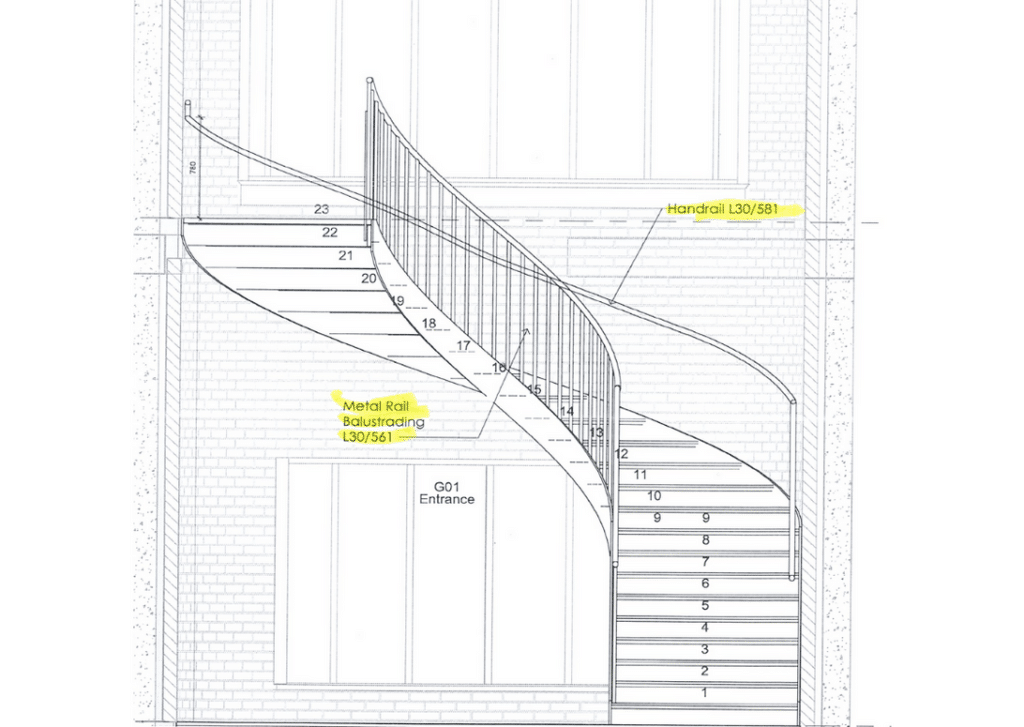So, you have decided or are considering installing a natural stone staircase in your property – Good choice! However, you’re not sure which stone is the best, the most durable or the easiest to clean when it comes to choosing which stone to go for…
There are various options in a range of colours and textures, in different stone types and from multiple sources, so we will take you through the important considerations you should have when choosing the best stone for your new natural stone-clad staircase. One type of stone isn’t “better” than any other, it depends on the desired finish you want to achieve. You may also want to consider the type or style of flooring if you are looking to match stairs and floor or if you are looking to differentiate the two.
Typically, most residential staircases will be built from limestone. Limestones are dense, durable by nature and for stone masons, great to work with and shape into step treads and other architectural stone features.
Limestones, such as Moleanos limestone from Portugal and Portland limestone from England, are elegant and subtle in colour and fossil content. These are popular for understated luxury. However, limestones can also come in more eclectic colours and patterns, such as La Roche limestone which has more fossils and highlights, or Moleanos Blue for mottled, earthy tones.
Limestone is also a low maintenance option for a staircase.

Marble is also a popular choice for staircases, especially where luxury is the intended finish! Striking designs can be created with bold marble sheets sourced from around the world, such as Arabescato marble with magnificent veining or a Gold Emperador or uniquely coloured marble if you want to play with colours in your designs.
Some may worry that marble step treads may be slippier than limestone or sandstone, but this is not the case. The marble for stairs can be honed rather than polished to mitigate the risk of slipping. A honed marble has a matte finish when compared to a high shine polish finish. Nonetheless, you can still use a polished marble for the staircase, you may need to if you choose a polished marble for your flooring. You will need to consider the use of the staircase, whether children, pets, etc will be using the stairs without caution.
A perfect example of a marble staircase can be found in Glasgow City Chambers, shown below.

When a slippery stone is used it is possible to either put a non-slip treatment onto the stone or put a non-slip strip at the front of the tread as we produce for commercial step treads, such at this School project in Oxford and the Bicester Village Step treads.
Sandstone is used all over the world as a construction material for steps, staircases, columns, walling, etc. Again, sandstone is a durable, non-slip choice for a staircase. White Mint sandstone is an off-white uniform stone, perfect for a fresh and crisp-cut staircase. Sandstones are available in various shades and can offer more of a matte appearance.

Another very hard stone by way of its igneous nature, granite can be used for internal and external staircases. Seemingly not as popular as the aforementioned stones in UK properties, but granite can offer a range of colours, finishes and levels of sparkle to any staircase design. Its strength and versability mean it can be used for cantilever staircases and even underwater, if you find yourself designing a spectacular pool or spa.
Away from a natural stone staircase, porcelain is a man-made material, typically available in tile formats for internal flooring and wall tiles, as well as for external paving. Making porcelain is a versatile option, as you can pick any colour and pattern effect you want. Patterns are printed onto the tile surface, these can be marble, limestone or concrete effect. It is also available in large format sheets and larger slabs, similar to the form that marble and limestone would come in.
Porcelain can be used for staircases, however, there are restrictive factors which need to be considered. Typically, internal porcelain is available in 10mm, but can come in 12mm and 14mm too. External porcelain at 20mm thick can also be used, this will give the bullnose a good effect and will be slip-resistant; some external porcelains have a rough texture and some do not.

Due to the reduced thickness of this material, an overhang of the step tread is not recommended, due to the aesthetics and the strength of a thinner overhang. Secondly, standard porcelain is not full-bodied, which means that the pattern printed on the top does not run through the body of the tile. Therefore, the edge of the step tread seen from the front and possibly the sides, if the staircase is free standing, will not have the pattern and may possibly be a different colour.
If you have a staircase where the tread edges are hidden on both sides, perhaps if encased by steel such as the design below, then the above issue is not significant, as the edge of the tread and riser won’t be seen, only the front. You can either have an edged tread, with a bullnose or pencil edge, or if you would like to overcome this issue entirely, it is possible to have the tread and riser joined with a mitre cut. This will give a sleek, modular, square design.
There will be some people reading this shouting at their screen, saying what about full-bodied porcelain. They would be right to flag this, as there are full-bodied porcelain products on the market, where the pattern/design of the material runs through the body of the tile and the surface. This avoids the above limiting factors and means porcelain can be used for staircases like the above natural stones for all styles of staircases. Some full-bodied porcelain products, such as Lapitec, are available in 12mm, 20mm and 30mm and are available in a range of colours.
Quartz is similar to full-bodied porcelain, as it is a man-made material with a full-bodied pattern. Its manufacturing process is simply different, it is produced by fusing resin with the natural ground materials whereas resin is not used in the porcelain process. Quartz is most popular for kitchen worktops and work surfaces, although this does not mean to say it cannot be used for step treads. Whilst we have only produced one staircase in quartz, it is possible. The slip-resistance would need to be considered by choosing only honed finishes rather than polished.
See our most popular stone choices in the staircase projects below and bear in mind we always love to try something new! So, if there is a different stone you would like to use for your natural stone staircase we can test the suitability of such stone and source this for your design.
If you are looking for some inspiration, why not check out our 7 ideas for natural stone staircases here.
You can also check out our range of stonecare products here.
Written by:
Ellie Parker,
Sales Manager
